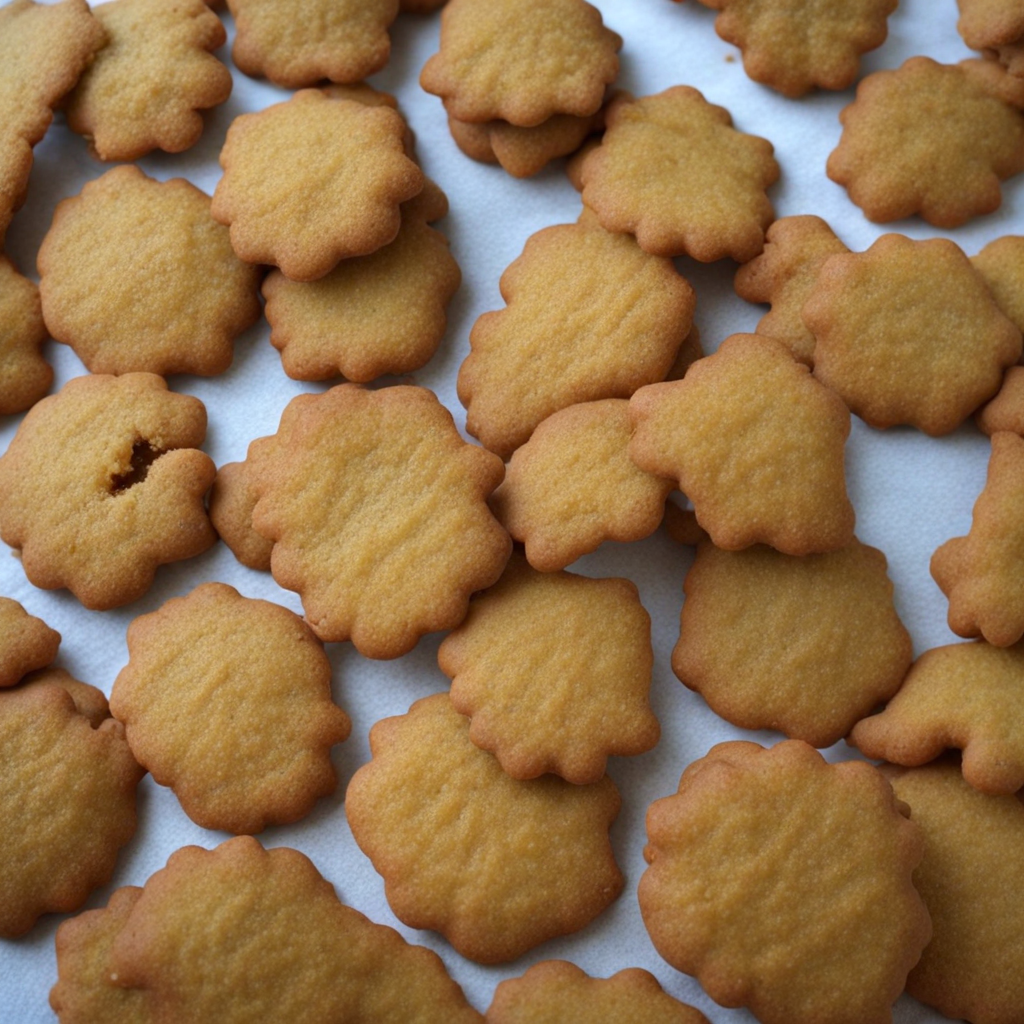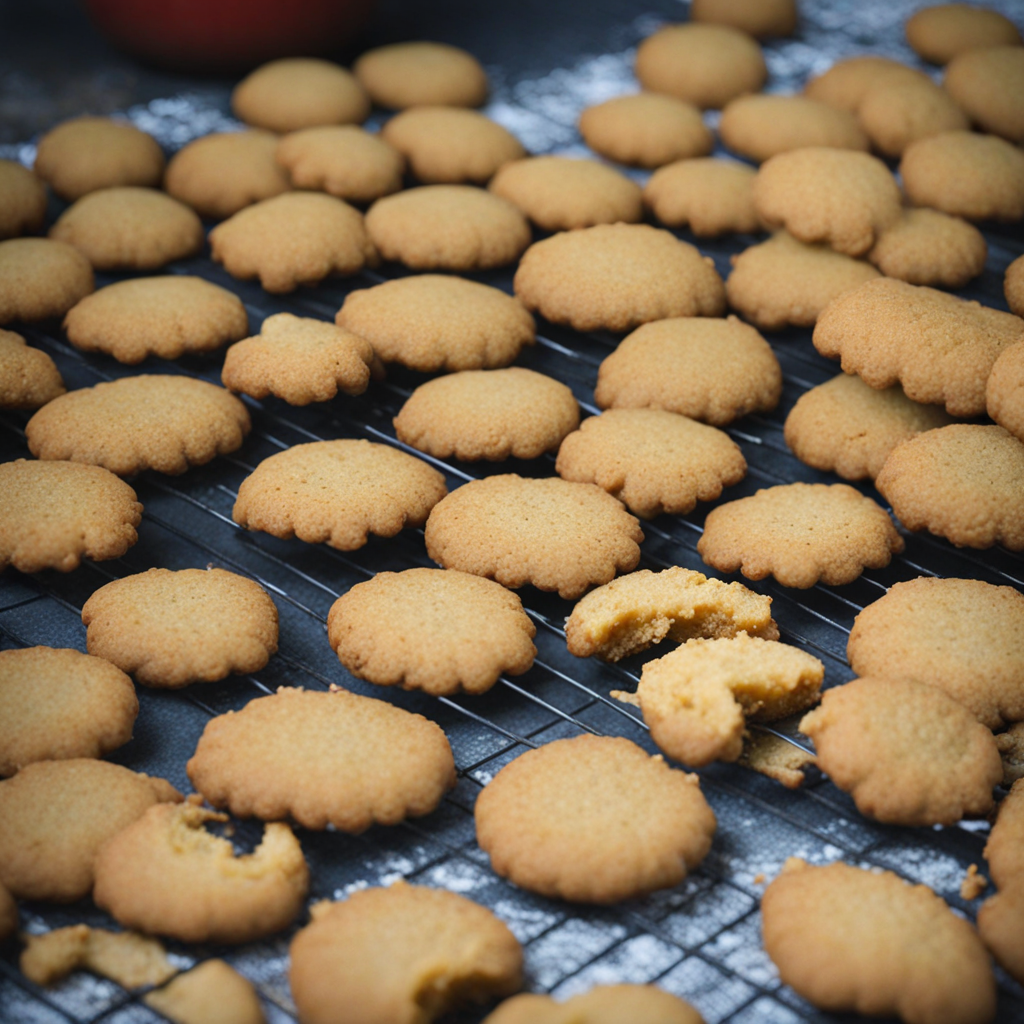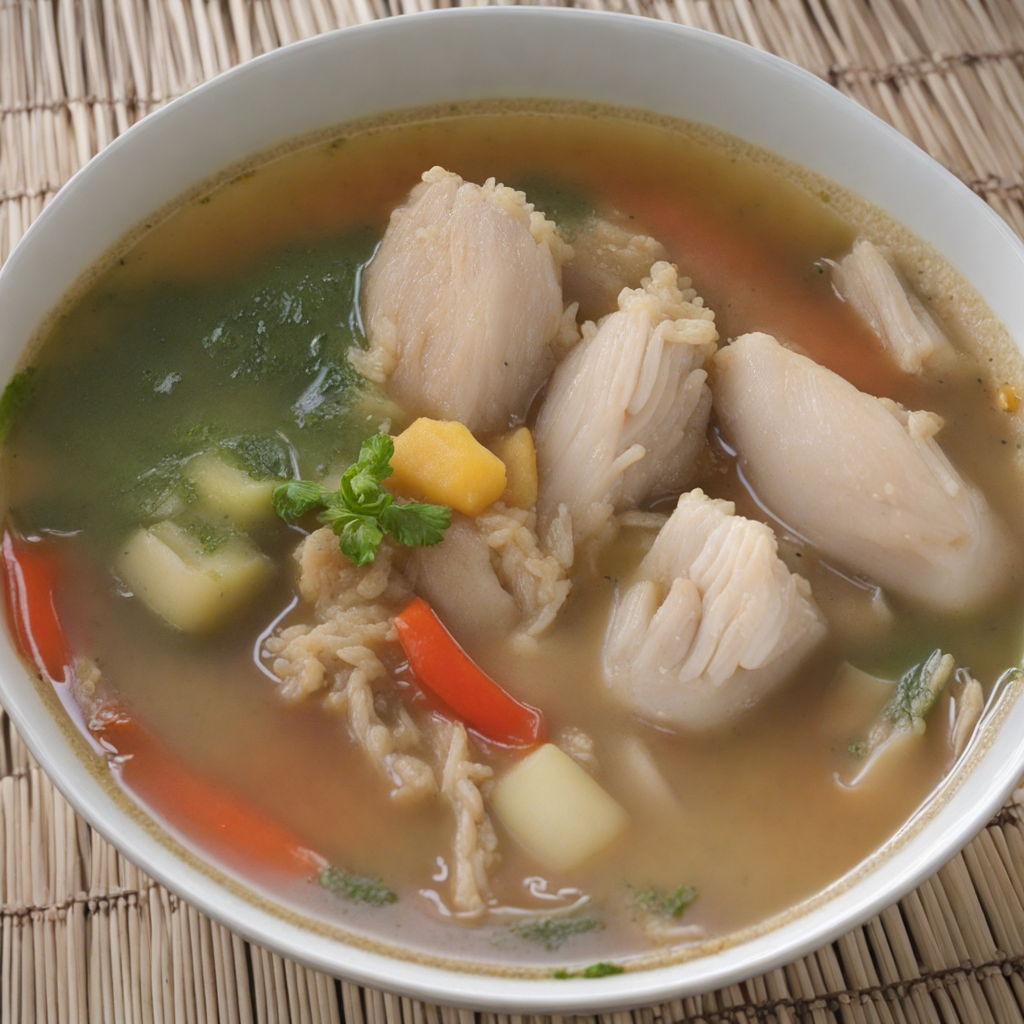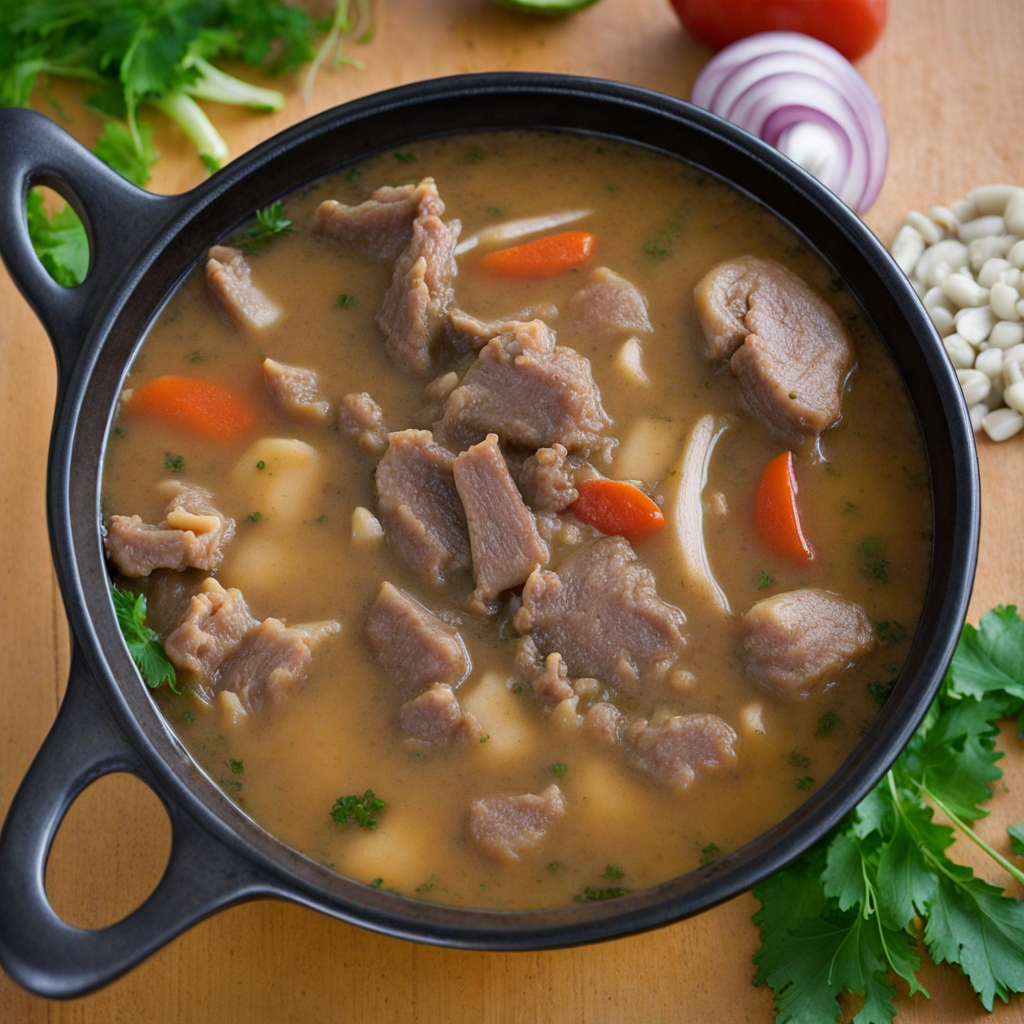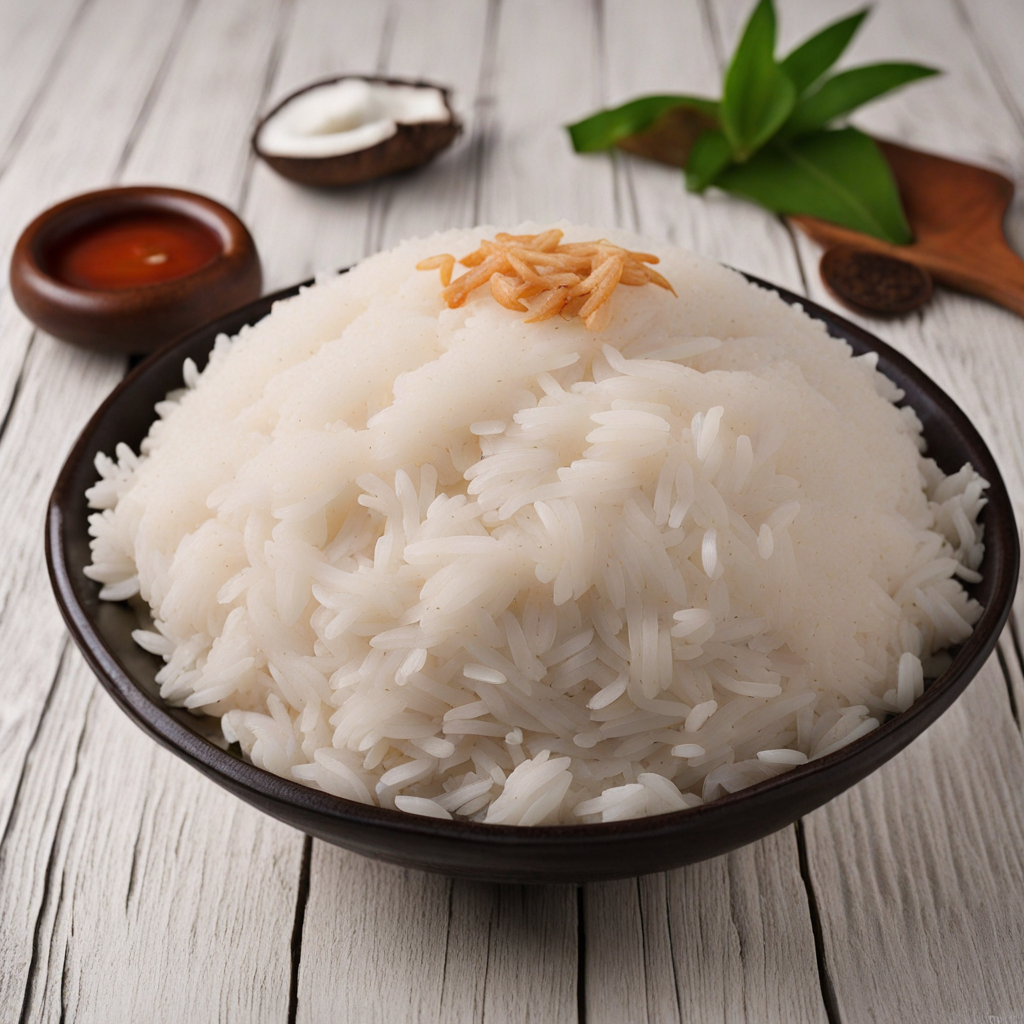Maizenakoekjes
Maizenakoekjes, a delightful treat hailing from Suriname, are a unique type of cookie that beautifully marries simplicity with flavor. Made primarily from maize flour, these cookies boast a light, crumbly texture that melts in your mouth. The natural sweetness of the maize flour is enhanced with a touch of sugar, creating a subtly sweet profile that is both comforting and satisfying. Each bite offers a warm, toasty flavor reminiscent of freshly baked corn bread, making them a wonderful companion to a hot cup of tea or coffee. The preparation of Maizenakoekjes is as charming as their taste. The dough is often enriched with ingredients like butter or margarine, which adds richness and a delightful aroma while baking. Some variations might include a hint of coconut or spices, such as nutmeg or cinnamon, adding an extra layer of complexity to the flavor. The cookies are typically shaped into small rounds and baked until golden brown, resulting in a beautifully crisp exterior that contrasts with the tender inside. What truly makes Maizenakoekjes special is their cultural significance in Suriname. They are often enjoyed during family gatherings and celebrations, symbolizing warmth and hospitality. The cookies, while simple in their ingredients, evoke a sense of nostalgia and comfort for many, representing a connection to home and tradition. For those looking to explore new tastes, Maizenakoekjes offer a delightful introduction to Surinamese cuisine, combining familiar flavors with a unique twist that is sure to leave a lasting impression.
How It Became This Dish
The Sweet Journey of Maizenakoekjes: A Surinamese Delight Origin of Maizenakoekjes Maizenakoekjes, or maize cookies, are a beloved treat in Suriname, a small South American country with a rich tapestry of cultures and traditions. The roots of Maizenakoekjes are deeply intertwined with Suriname's colonial past and the diverse ethnic groups that have made the region their home. The name "maizena" refers to cornstarch, a key ingredient of these cookies, which reflects the agricultural landscape of Suriname, where maize has long been cultivated. The origins of maize in the Americas can be traced back thousands of years to indigenous cultures, notably the Mesoamericans who first domesticated the plant. When European colonizers arrived in the 16th century, they encountered maize and quickly adopted it into their diets. This led to a fusion of culinary practices as indigenous peoples and European settlers exchanged ingredients, cooking techniques, and recipes. In Suriname, which was colonized by the Dutch in the 17th century, maize became a staple food due to its adaptability to the local climate and soil. The introduction of enslaved Africans to the region further enriched the culinary landscape, as they brought their own traditions and flavors, which melded with local ingredients and European influences. The result was a distinctive Surinamese cuisine that celebrates diversity and reflects the nation’s complicated history. Cultural Significance Maizenakoekjes hold a special place in the hearts and homes of Surinamese people. They are often associated with festive occasions, family gatherings, and celebrations, serving as a symbol of comfort and community. These cookies are not just a sweet treat; they embody the spirit of togetherness and the sharing of cultural heritage. The process of making Maizenakoekjes is often communal, with families coming together to bake and enjoy these cookies. The act of preparing food has always been a vital way to maintain cultural ties, and Maizenakoekjes serve as a connection to Suriname's past as well as a celebration of its diverse present. The cookies are particularly popular during holidays and special events, such as Suriname's Independence Day on November 25, when families gather to commemorate their national identity and heritage. While they are enjoyed year-round, their presence during celebrations serves as a reminder of the country's rich cultural quilt, stitched together through shared traditions and experiences. Ingredients and Preparation The primary ingredient in Maizenakoekjes is maizena, or cornstarch, which gives the cookies their characteristic light and crumbly texture. The basic recipe typically includes the following ingredients: cornstarch, butter, sugar, and a hint of vanilla or lemon zest. Some variations may include additional flavors such as coconut or nuts, reflecting the personal preferences of families and communities. The preparation of Maizenakoekjes is relatively simple, making them accessible to bakers of all skill levels. The cornstarch is combined with softened butter and sugar until a smooth dough forms. After chilling the dough, it is rolled into small balls, flattened, and baked until lightly golden. The result is a delicate cookie that melts in your mouth, with a subtle sweetness that is both comforting and satisfying. Evolution Over Time As Suriname has evolved, so too has the role of Maizenakoekjes within its society. In the 20th century, with the advent of globalization and the spread of culinary influences, Maizenakoekjes began to gain popularity beyond Suriname's borders. The diaspora of Surinamese people, particularly to the Netherlands and other countries, has contributed to the cookies’ growing recognition on the international stage. In the Netherlands, for example, Surinamese communities have introduced Maizenakoekjes to a broader audience, often selling them at markets or incorporating them into cafes and restaurants that celebrate Surinamese cuisine. The cookies have found a niche among those seeking to explore different flavors and culinary traditions, marking a significant shift from their humble, home-baked origins. Additionally, the rise of social media has allowed home bakers and chefs to share their interpretations of Maizenakoekjes, leading to innovative variations of the classic recipe. Some bakers experiment with gluten-free alternatives, while others add unique ingredients to create fusion flavors that reflect modern tastes. This evolution illustrates how traditional foods can adapt and thrive in contemporary culinary landscapes, while still honoring their roots. The Future of Maizenakoekjes As Suriname continues to navigate its identity in a globalized world, Maizenakoekjes will undoubtedly remain a cherished part of its culinary heritage. The cookies represent not only a delicious treat but also a tangible link to the past, embodying the stories and experiences of generations. Their presence at family gatherings, celebrations, and cultural events ensures that they will continue to be a staple of Surinamese life. In recent years, there has been a growing interest in preserving and promoting traditional foods as part of cultural heritage, and Maizenakoekjes are no exception. Organizations and local chefs are increasingly focused on educating younger generations about the significance of these cookies, encouraging them to embrace their culinary heritage and keep these traditions alive. Furthermore, as the world becomes more interconnected, there is potential for Maizenakoekjes to become an even more prominent symbol of Surinamese culture on the global stage. Food festivals, culinary tourism, and international collaborations could help to elevate these cookies, allowing them to be enjoyed by people from diverse backgrounds and fostering a greater appreciation for Suriname's rich culinary history. Conclusion Maizenakoekjes are more than just cookies; they encapsulate the essence of Surinamese culture, reflecting the country's complex history and the blending of traditions that define its culinary landscape. From their indigenous roots to their modern interpretations, these cookies serve as a testament to the resilience and creativity of the Surinamese people. As they continue to evolve, Maizenakoekjes will undoubtedly remain a sweet reminder of home, community, and the rich tapestry of flavors that make up Suriname's gastronomic heritage.
You may like
Discover local flavors from Suriname


